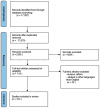Common and Trace Metals in Alzheimer's and Parkinson's Diseases
- PMID: 37958705
- PMCID: PMC10649239
- DOI: 10.3390/ijms242115721
Common and Trace Metals in Alzheimer's and Parkinson's Diseases
Abstract
Trace elements and metals play critical roles in the normal functioning of the central nervous system (CNS), and their dysregulation has been implicated in neurodegenerative disorders such as Alzheimer's disease (AD) and Parkinson's disease (PD). In a healthy CNS, zinc, copper, iron, and manganese play vital roles as enzyme cofactors, supporting neurotransmission, cellular metabolism, and antioxidant defense. Imbalances in these trace elements can lead to oxidative stress, protein aggregation, and mitochondrial dysfunction, thereby contributing to neurodegeneration. In AD, copper and zinc imbalances are associated with amyloid-beta and tau pathology, impacting cognitive function. PD involves the disruption of iron and manganese levels, leading to oxidative damage and neuronal loss. Toxic metals, like lead and cadmium, impair synaptic transmission and exacerbate neuroinflammation, impacting CNS health. The role of aluminum in AD neurofibrillary tangle formation has also been noted. Understanding the roles of these elements in CNS health and disease might offer potential therapeutic targets for neurodegenerative disorders. The Codex Alimentarius standards concerning the mentioned metals in foods may be one of the key legal contributions to safeguarding public health. Further research is needed to fully comprehend these complex mechanisms and develop effective interventions.
Keywords: Codex Alimentarius; diet; food; heavy metals; neurodegeneration; trace elements.
Conflict of interest statement
The authors declare no conflict of interest. The funders had no role in the design of the study; in the collection, analyses, or interpretation of data; in the writing of the manuscript; or in the decision to publish the results.
Figures
Similar articles
-
The role of zinc, copper, manganese and iron in neurodegenerative diseases.Neurotoxicology. 2019 Sep;74:230-241. doi: 10.1016/j.neuro.2019.07.007. Epub 2019 Aug 1. Neurotoxicology. 2019. PMID: 31377220 Review.
-
Role of metals in Alzheimer's disease.Metab Brain Dis. 2021 Oct;36(7):1627-1639. doi: 10.1007/s11011-021-00765-w. Epub 2021 Jul 27. Metab Brain Dis. 2021. PMID: 34313926 Review.
-
The Role of Trace Metals in Alzheimer’s Disease.In: Wisniewski T, editor. Alzheimer’s Disease [Internet]. Brisbane (AU): Codon Publications; 2019 Dec 20. Chapter 6. In: Wisniewski T, editor. Alzheimer’s Disease [Internet]. Brisbane (AU): Codon Publications; 2019 Dec 20. Chapter 6. PMID: 31895516 Free Books & Documents. Review.
-
Trace element alterations in Alzheimer's disease: A review.Clin Anat. 2021 Jul;34(5):766-773. doi: 10.1002/ca.23727. Epub 2021 Feb 21. Clin Anat. 2021. PMID: 33580904 Review.
-
Challenges and Opportunities of Metal Chelation Therapy in Trace Metals Overload-Induced Alzheimer's Disease.Neurotox Res. 2023 Jun;41(3):270-287. doi: 10.1007/s12640-023-00634-7. Epub 2023 Jan 27. Neurotox Res. 2023. PMID: 36705861 Review.
Cited by
-
The emerging role of cuproptosis in spinal cord injury.Front Immunol. 2025 Jun 16;16:1595852. doi: 10.3389/fimmu.2025.1595852. eCollection 2025. Front Immunol. 2025. PMID: 40589743 Free PMC article. Review.
-
Pathological α-synuclein dysregulates epitranscriptomic writer METTL3 to drive neuroinflammation in microglia.Cell Rep. 2025 May 27;44(5):115618. doi: 10.1016/j.celrep.2025.115618. Epub 2025 Apr 23. Cell Rep. 2025. PMID: 40279247 Free PMC article.
-
Secondary Bioactive Metabolites from Foods of Plant Origin as Theravention Agents against Neurodegenerative Disorders.Foods. 2024 Jul 20;13(14):2289. doi: 10.3390/foods13142289. Foods. 2024. PMID: 39063373 Free PMC article. Review.
-
Selenoproteins: Zoom-In to Their Metal-Binding Properties in Neurodegenerative Diseases.Int J Mol Sci. 2025 Feb 3;26(3):1305. doi: 10.3390/ijms26031305. Int J Mol Sci. 2025. PMID: 39941073 Free PMC article. Review.
-
Protective role of hesperetin in Drosophila melanogaster model of ferrous sulphate-induced toxicity.BMC Pharmacol Toxicol. 2024 Sep 27;25(1):70. doi: 10.1186/s40360-024-00792-0. BMC Pharmacol Toxicol. 2024. PMID: 39334451 Free PMC article.
References
Publication types
MeSH terms
Substances
Grants and funding
LinkOut - more resources
Full Text Sources
Medical




